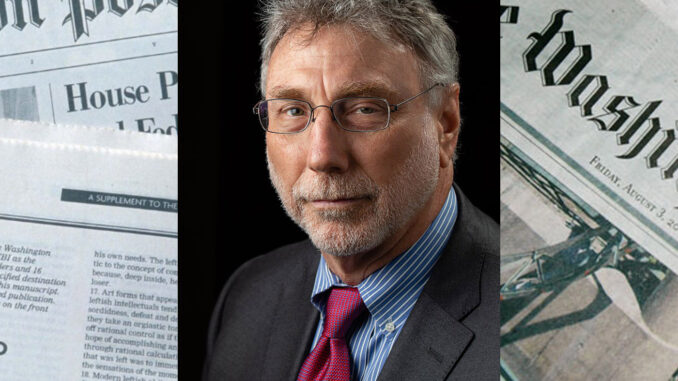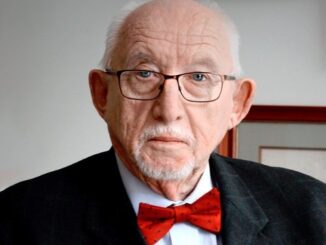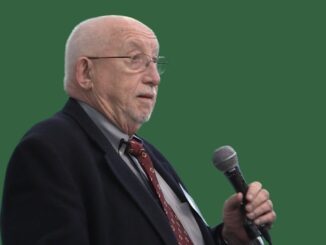
| Washington – I am something of a connoisseur of editors. I have worked for them, alongside them, and have hated and admired them. So I was ecstatic when Adam Clayton Powell III, my cohost on the TV show “White House Chronicle,” told me he contacted Martin “Marty” Baron, who has a place in the pantheon of great editors, and he agreed to come on the show.We recorded a two-part series with Baron, which was a tour de force appearance. He talked about the excitement of being the editor of The Miami Herald when Elian Gonzalez was the big story; the years-long unveiling of sexual abuse in the Catholic Church in The Boston Globe when he was its editor; and his becoming executive editor of The Washington Post and its transition from being a family property to being owned by Jeff Bezos, then the world’s richest man.As he did in his book, “Collision of Power: Trump, Bezos, and The Washington Post,” he discussed how Trump early on had the new Post team to dinner at the White House and endeavored to co-opt them into the Trump camp. Trump had, as Baron explained, picked on the wrong team. Baron’s biggest achievement, I believe, was the investigation that exposed the Catholic Church. I was traveling frequently to Ireland at that time — a country, sadly, that had seen more than its share of clerical excess. The Globe’s revelations had an immediate impact there and around the world: Think of the thousands of boys and girls who won’t be abused as a result.Every editor edits differently and leaves a different mark. I worked for a weekly newspaper editor in Zimbabwe, Costa Theo, who set much of the hot type and edited on the Linotype machine. He urged me to use what he called “informants” many years before Watergate ushered in the practice of talking about “sources” without naming them and relying on the integrity of the reporter to guarantee the existence of the sources.Herbert Gunn, father of the poet Thom Gunn, edited various newspapers in London’s Fleet Street — when I knew him, it was The Sunday Dispatch. He sat in a commanding way on what was called the “backbench” at the end of the newsroom and edited what he thought needed his touch in green ink with a Parker 51. If you saw green ink, you jumped.Gunn was a superb editor and, like Ben Bradlee at the Post, gave a theatrical performance as well. All I ever saw in green ink were cryptic notes like “15 minutes.” That meant, “I will see you in the pub in 15 minutes.” It was an assignment not an invitation.Some editors are technicians and change the look of the papers they edit. John Denson at The New York Herald Tribune is credited with introducing horizontal layouts using Bodoni typefaces as the principal type of the newspaper. This became the standard for many U.S. newspapers, including The Washington Post.A newspaper genius, David Laventhol, put the women’s page in the Post to flight. As the Style section’s first editor, he did it with typological aplomb and with the use of photos in a Life magazine way: big and bold.Laventhol, who ended up as publisher of The Los Angeles Times and Newsday, came to the Post from The New York Herald Tribune, where he had risen to managing editor. He and I worked together briefly in 1963 and I remember him having a days-long battle with Marguerite Higgins, the famous foreign correspondent, over the use of the word “exotic.”Of course, Laventhol was only able to create the revolutionary Style section because executive editor Bradlee gave him free rein.Bradlee edited with leadership, while affecting a kind international jewel thief persona, as might be played by David Niven or Steve McQueen. His genius always was the big picture. He didn’t write headlines or change captions, but he did decide the big stories of the day.One of those stories was about a break-in at an office and apartment complex called The Watergate. I had arranged a dinner date with a reporter at the rival Evening Star. She called me and said, “I am afraid I will be late. There has been some sort of break-in at The Watergate. But it can’t be important because the Post is sending Carl.”At that time, Carl Bernstein wasn’t a star, just a young city-desk reporter. I don’t think my date that night stayed in journalism.Baron, like Bradlee, had a nose for the big one — and he brought it home. On Twitter: @llewellynking2 Llewellyn King is executive producer and host of “White House Chronicle” on PBS.Read this column on: White House Chronicle |

Traduzione italiana
Grandi Editori, a cominciare da Martin Baron
Sono una specie di intenditore di editori. Ho lavorato per loro, al loro fianco, e li ho odiati e ammirati. Quindi sono rimasto estasiato quando Adam Clayton Powell III, mio co-conduttore del programma televisivo “White House Chronicle”, mi ha riferito di aver contattato Martin “Marty” Baron, che ha un posto nel pantheon dei grandi editori, e lui ha accettato di partecipare al programma. spettacolo.
Abbiamo registrato una serie in due parti con Baron, che è stata un’apparizione da tour de force. Ha parlato dell’emozione di essere direttore del Miami Herald quando Elian Gonzalez era la grande notizia; la denuncia durata anni sugli abusi sessuali nella Chiesa cattolica sul Boston Globe quando ne era l’editore; e il suo diventare direttore esecutivo del Washington Post e il suo passaggio dall’essere una proprietà di famiglia all’essere di proprietà di Jeff Bezos, allora l’uomo più ricco del mondo.
Come ha fatto nel suo libro “Collision of Power: Trump, Bezos, and The Washington Post”, ha discusso di come Trump abbia invitato il nuovo team del Post a cena alla Casa Bianca e abbia cercato di cooptarli nel campo di Trump. Trump, come ha spiegato Baron, aveva scelto la squadra sbagliata.
Credo che il risultato più grande di Baron sia stata l’indagine che ha smascherato la Chiesa cattolica. A quel tempo viaggiavo spesso in Irlanda, un paese che, purtroppo, aveva visto più della sua quota di eccessi clericali. Le rivelazioni del Globe hanno avuto un impatto immediato lì e in tutto il mondo: pensate alle migliaia di ragazzi e ragazze che di conseguenza non subirono abusi.
Ogni editore modifica in modo diverso e lascia un segno diverso. Ho lavorato per un editore di un giornale settimanale nello Zimbabwe, Costa Theo, che ha impostato gran parte dei caratteri a caldo e li ha modificati con la macchina Linotype. Mi esortò a utilizzare quelli che chiamava “informatori” molti anni prima che il Watergate inaugurasse la pratica di parlare di “fonti” senza nominarle e facendo affidamento sull’integrità del giornalista per garantire l’esistenza delle fonti.
Herbert Gunn, padre del poeta Thom Gunn, dirigeva vari giornali in Fleet Street a Londra: quando lo conoscevo, era The Sunday Dispatch. Si sedette in modo imponente su quello che veniva chiamato il “backbench” all’estremità della redazione e montò quello che pensava avesse bisogno del suo tocco con inchiostro verde con una Parker 51. Se vedevi inchiostro verde, saltavi.
Gunn era un montatore eccezionale e, come Ben Bradlee del Post, diede anche lui uno spettacolo teatrale. Tutto quello che ho mai visto con inchiostro verde erano note criptiche come “15 minuti”. Ciò significava: “Ci vediamo al pub tra 15 minuti”. Era un incarico, non un invito.
Alcuni redattori sono tecnici e cambiano l’aspetto dei documenti che modificano. A John Denson del New York Herald Tribune viene attribuito il merito di aver introdotto i layout orizzontali utilizzando i caratteri Bodoni come tipo principale del giornale. Questo divenne lo standard per molti giornali statunitensi, incluso il Washington Post.
Un genio del giornale, David Laventhol, ha messo in fuga la pagina femminile del Post. Come primo redattore della sezione Stile, lo ha fatto con disinvoltura tipologica e con l’uso delle foto in stile rivista Life: grandi e audaci.Laventhol, che finì come editore del Los Angeles Times e del Newsday, arrivò al Post dal New York Herald Tribune, dove era diventato caporedattore.
Lui e io lavorammo insieme brevemente nel 1963 e ricordo che ebbe una battaglia durata giorni con Marguerite Higgins, la famosa corrispondente estera, sull’uso della parola “esotico”. Naturalmente Laventhol ha potuto creare la sezione Stile rivoluzionario solo perché il direttore esecutivo Bradlee gli ha dato libero sfogo.
Bradlee ha avuto la leadership, pur fingendo un gentile personaggio di ladro di gioielli internazionale, come potrebbe essere interpretato da David Niven o Steve McQueen. Il suo genio è sempre stato il quadro generale. Non scriveva titoli né cambiava didascalie, ma decideva le grandi storie della giornata.
Una di quelle storie riguardava un’irruzione in un complesso di uffici e appartamenti chiamato The Watergate. Avevo organizzato un appuntamento a cena con un giornalista presso il rivale Evening Star. Mi ha chiamato e mi ha detto: “Temo che farò tardi. C’è stata una specie di effrazione al Watergate. Ma non può essere importante perché la Posta manda Carl.»
A quel tempo, Carl Bernstein non era una star, ma solo un giovane reporter cittadino. Non credo che il mio appuntamento quella sera sia rimasto nel giornalismo. Baron, come Bradlee, aveva fiuto per il grande – e lo ha portato a casa.





